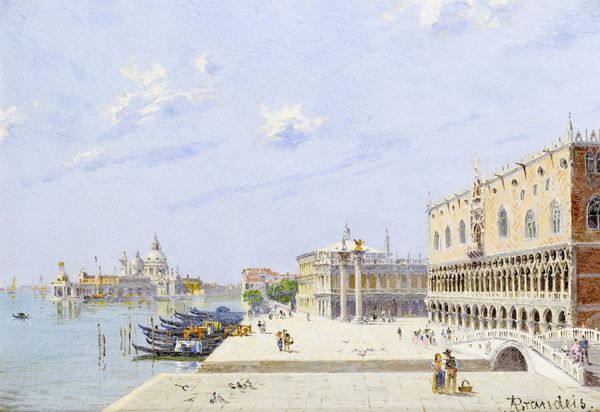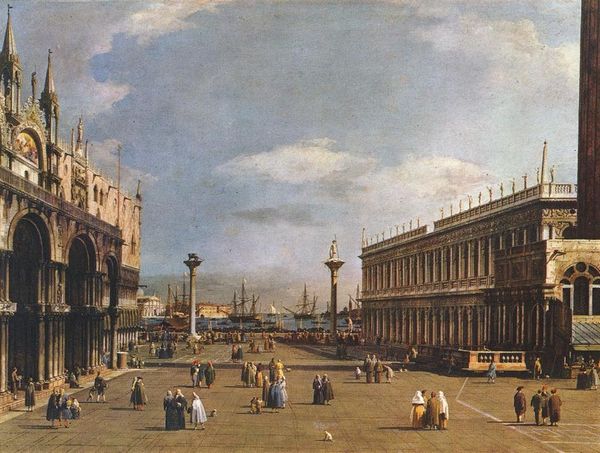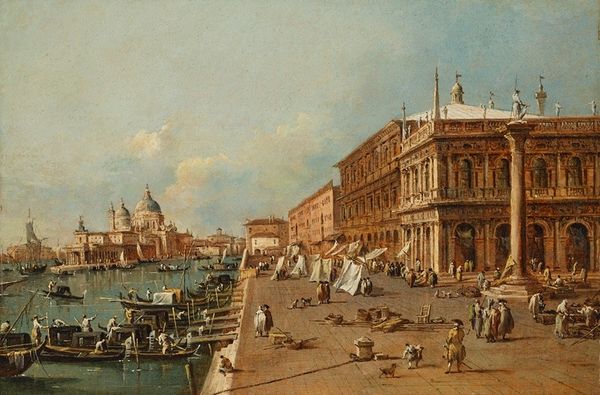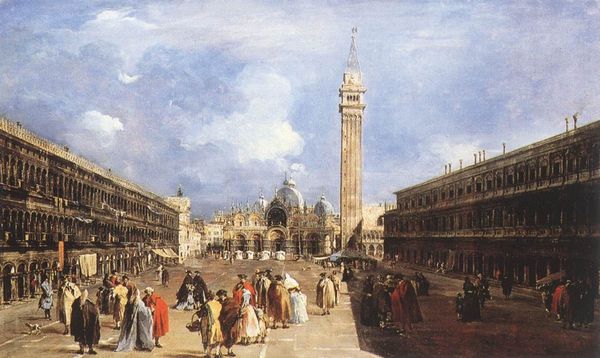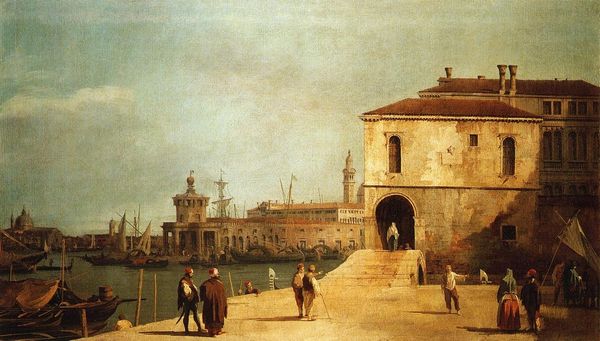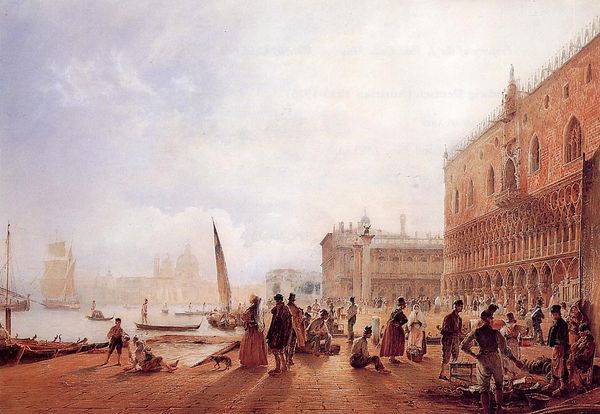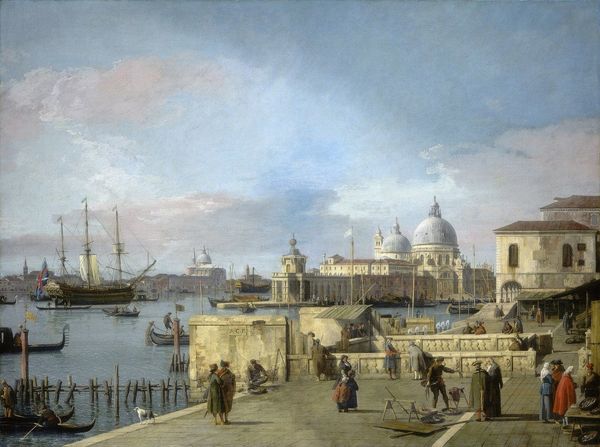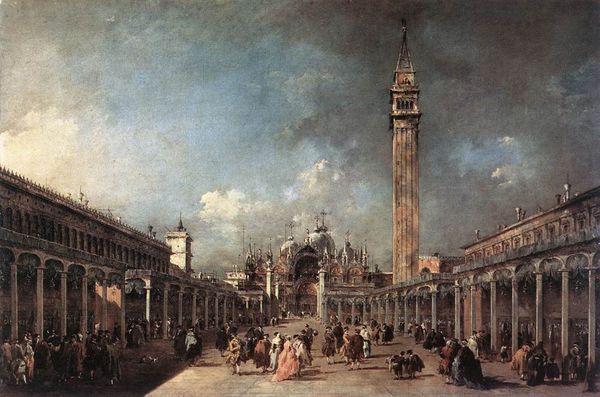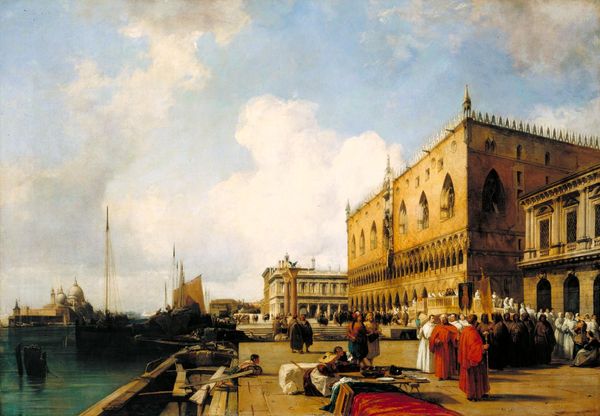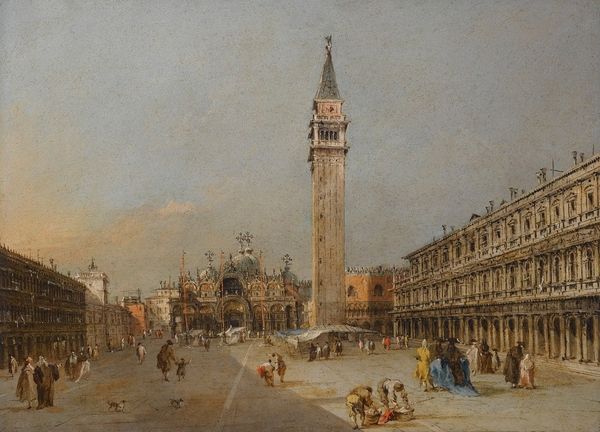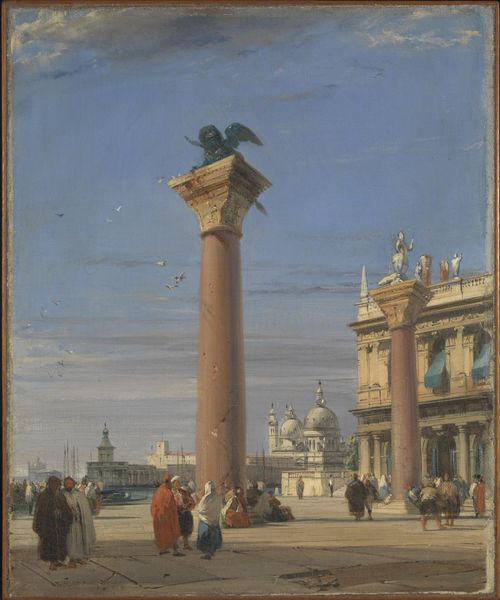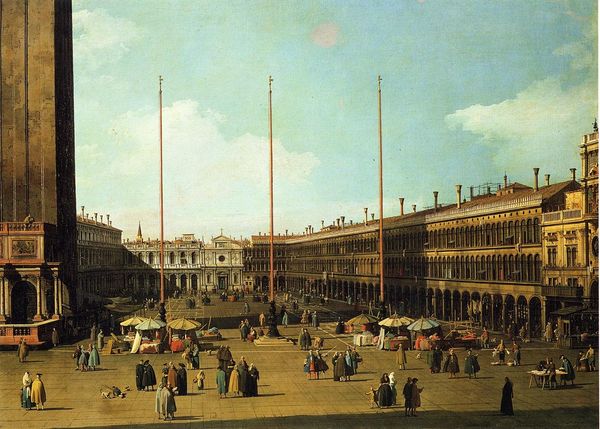
Venice View of the Esclavons Quay 1834
0:00
0:00
jeanbaptistecamillecorot
Norton Simon Museum, Pasadena, CA, US
Copyright: Public domain
Editor: Here we have Corot's "Venice, View of the Esclavons Quay," painted in 1834. It’s an oil painting depicting a bustling Venetian scene, but it’s rendered in such soft light, it almost feels like a dream. What jumps out at you when you look at this piece? Curator: I’m drawn to how the material reality of Venice is both celebrated and subtly critiqued here. Consider the pigments Corot used: the ochres and umbers creating the hazy atmosphere, the blues hinting at the sea. But notice how that seemingly casual arrangement belies the intense industry propping up this spectacle for tourism. Look closely at the boats, at the implied labor required to simply keep this floating city from sinking. It is far more than just light hitting stone. Editor: I see what you mean. The detail on the Doge's Palace contrasts sharply with the blurry background, as if it's supposed to highlight power structures rather than just pleasing aesthetics. How did Venetian painting influence this idea? Curator: Venetian painting tradition was one sustained almost entirely by wealthy patronage. These structures, immortalized, would rot back into the lagoon’s sediment if it were not for ongoing labor and access to specific, highly prized resources and skills. Note the repetitive architectural elements, achieved by applying the oil paint thinly, almost mechanically. Are these repetitive patterns merely aesthetic or a testament to the burgeoning industrialized production of art materials at the time? Editor: It makes you think about the layers of industry required to make such a dreamy picture! Thanks, I'll definitely look at this piece differently now, thinking about its construction, both literally and figuratively. Curator: Precisely. Let's always remember that even the most serene image has a material cost and a story of production to tell.
Comments
No comments
Be the first to comment and join the conversation on the ultimate creative platform.
